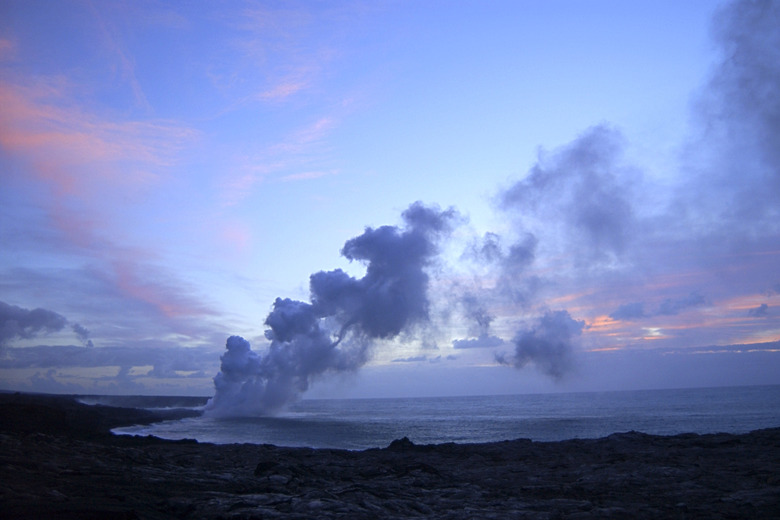Negative Effects Of Shield Volcanoes
As with all volcanoes, there are negative effects of shield volcano eruptions. However, the other two major types of volcanoes — cinder cones and stratovolcanoes — feature eruptions that are much more violent than those of shield volcanoes. The relatively peaceful eruption from shield volcanoes is known as a Hawaiian eruption.
Hawaiian Eruptions
Hawaiian Eruptions
Hawaiian eruptions are generally considered effusive eruptions, defined by a steady, prolonged flow of lava. This is in contrast to the explosive eruptions experienced by cinder cones and stratovolcanoes, which eject large amounts of magma and other volcanic material high into the air. Hawaiian eruptions are so named due to their prevalence on the Hawaiian islands, which are made from a chain of shield volcanoes. The slow flow of highly viscous lava from a Hawaiian eruption creates a large, low-profile volcano that resembles a circular shield.
Lava Flow
Lava Flow
The lava flow from a shield volcano eruption is largely composed from basaltic magma. The lava features a low viscosity and erupts in a relatively gentle stream. Therefore, shield volcano eruptions generally do not pose a threat to human lives, as the lava flow is easy to predict and avoid. However, in prolonged eruptions, shield volcanoes can produce enough lava flow to reach outlying areas, destroying agriculture, homes and other structures. The lava flow can also reach nearby highways, rendering them impassible.
Gasses and Debris
Gasses and Debris
Because of the gentle nature of Hawaiian explosions, shield volcanoes produce relatively low amounts of gas and debris. However, sometimes an obstruction in the volcanic vent can cause a buildup of pressure. This leads to a sudden, atypically violent eruption of gas and debris. Therefore, it is dangerous for spectators to be too close to the shield volcano vent, as the eruptive behavior cannot always be predicted. Another negative is, as with all volcanoes, the gases produced by shield volcanoes lend to the greenhouse effect that global warming.
Positive Effects
Positive Effects
Volcanic eruptions are a vital part of the Earth's ecosystem. The gases produced by volcanic eruptions created the atmosphere in the early stages of the Earth's formation, which allows it to retain water and sustain life. Over time, the eruptions from shield volcanoes accumulate into habitable islands such as Hawaii, Iceland and the Galapagos Islands.
References
Cite This Article
MLA
Eliot, Alexander. "Negative Effects Of Shield Volcanoes" sciencing.com, https://www.sciencing.com/negative-effects-shield-volcanoes-10062103/. 24 April 2017.
APA
Eliot, Alexander. (2017, April 24). Negative Effects Of Shield Volcanoes. sciencing.com. Retrieved from https://www.sciencing.com/negative-effects-shield-volcanoes-10062103/
Chicago
Eliot, Alexander. Negative Effects Of Shield Volcanoes last modified March 24, 2022. https://www.sciencing.com/negative-effects-shield-volcanoes-10062103/
